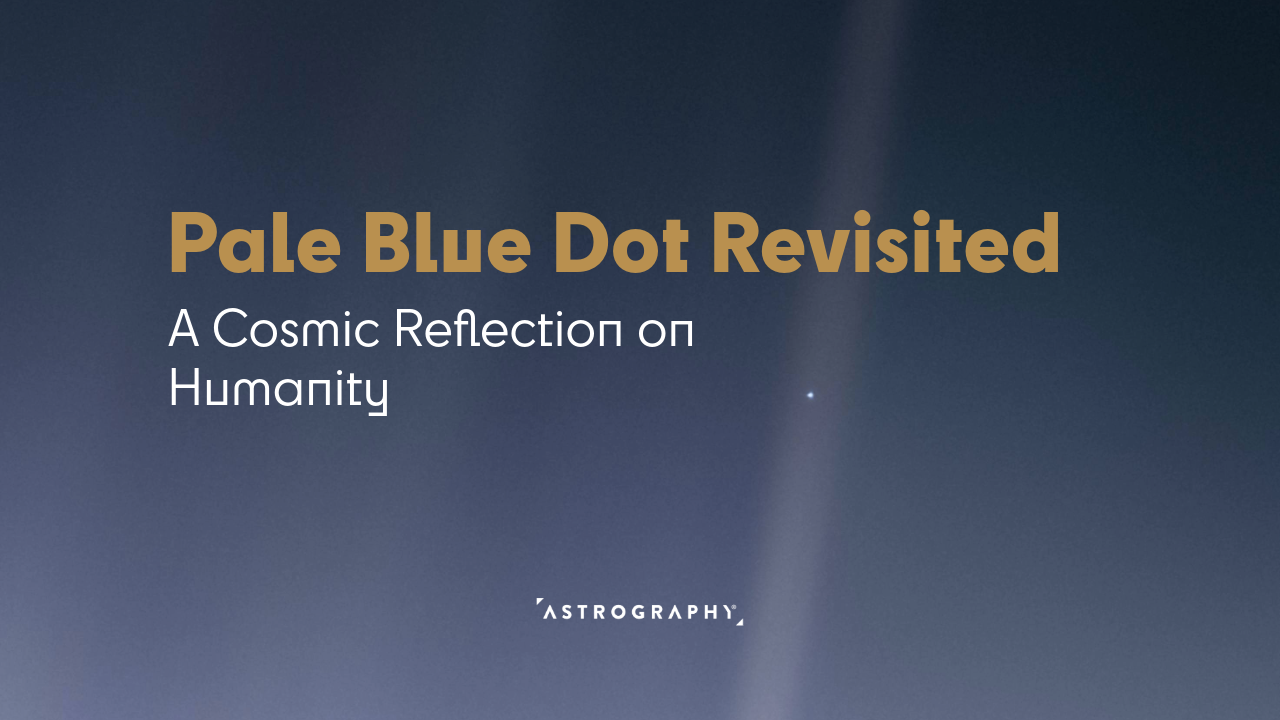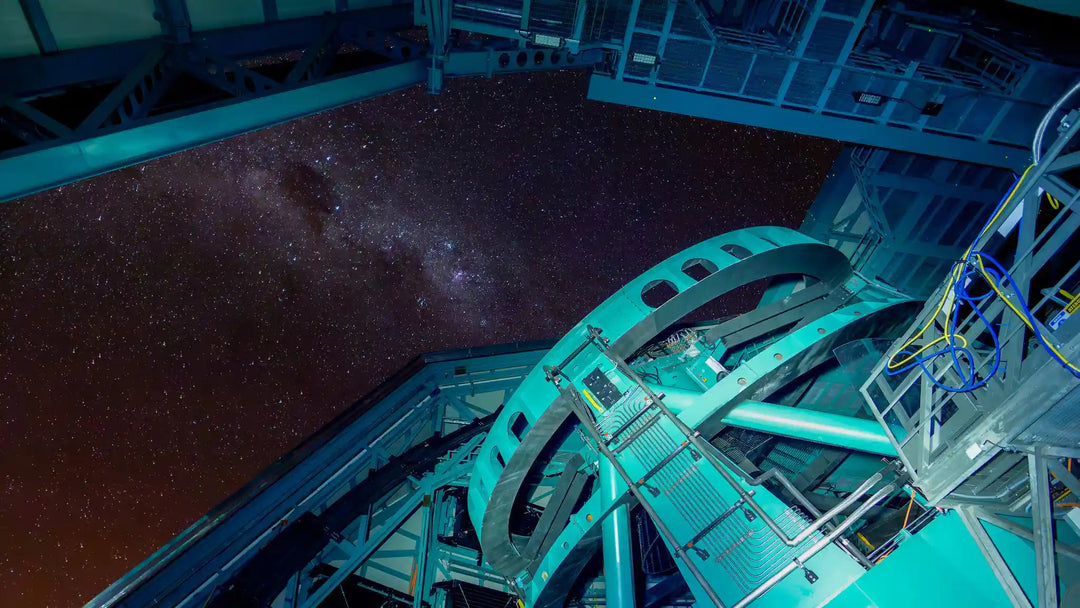Pale Blue Dot Revisited: A Cosmic Reflection on Humanity

The Pale Blue Dot is not just a photograph; it is a profound reminder of our place in the universe. Taken by NASA's Voyager 1 spacecraft on February 14, 1990, this iconic image captures Earth as a minuscule speck suspended in the vastness of space, surrounded by a sunbeam. The image has become a symbol of humanity's fragility and interconnectedness, inspiring countless reflections on our existence and responsibilities as stewards of our planet.
Pale Blue Dot Revisited: Updated Version of Legendary Photo
In 2020, to commemorate the 30th anniversary of the original photograph, NASA released an updated version of the Pale Blue Dot, known as Pale Blue Dot Revisited.
This new image was processed using modern imaging techniques while respecting the original data and intent of the mission planners. The revised image was processed by JPL engineer and image processing enthusiast Kevin M. Gill with input from two of the image's original planners, Candy Hansen and William Kosmann.
The updated version enhances the visibility of Earth, making it appear brighter and clearer than the original, while still capturing the essence of the iconic shot.
The release of this new image rekindled interest in the Voyager mission and its legacy. It serves as a reminder that, despite the passage of time and advancements in technology, the core message of the Pale Blue Dot remains as relevant as ever.
Pale Blue Dot: Context and History
The Voyager mission, launched in 1977, was designed to explore the outer planets of our solar system. As Voyager 1 approached the edge of the solar system, mission scientists, including the renowned astronomer Carl Sagan, decided to take a series of photographs of the solar system, culminating in what they called the Family Portrait. This sequence included images of six planets, but it was the photograph of Earth that captured the world's imagination.
On that fateful day, Voyager 1 was approximately 3.7 billion miles (6 billion kilometers) from the Sun when it turned its camera back toward home. The resulting image showed Earth as a mere pixel, a pale blue dot against the backdrop of the cosmos. Sagan later eloquently reflected on this image in his book, Pale Blue Dot: A Vision of the Human Future in Space, emphasizing the need for unity and care for our planet and each other.
Pale Blue Dot Revisited: Significance for Humanity
The significance of the Pale Blue Dot extends far beyond its aesthetic appeal. It serves as a humbling reminder of our place in the universe.
Look again at that dot. That's here. That's home. That's us
This perspective encourages us to consider the fragility of our existence and the importance of protecting our planet.
The image has also played a crucial role in environmental awareness.
By visualizing Earth as a tiny dot in the vastness of space, it highlights the need for collective action to combat climate change and preserve our home. The Pale Blue Dot has become a rallying cry for environmentalists, urging humanity to cherish and protect the only planet we have.
Trivia and Interesting Facts about Pale Blue Dot
The term "Pale Blue Dot" was popularized by Carl Sagan, who advocated for using Voyager's cameras to capture images of Earth from afar.
The original image was part of a series of 60 photographs taken by Voyager 1, which also included images of Jupiter, Saturn, Uranus, and Neptune.
The Earth appears blue in the image due to Rayleigh scattering of sunlight in the atmosphere, which scatters shorter wavelengths of light more than longer ones.
In addition to its scientific significance, the Pale Blue Dot has inspired numerous works of art, literature, and music, reflecting its profound impact on culture and society.
The Voyager spacecraft carries a Golden Record that includes sounds and images from Earth, intended as a message to potential extraterrestrial life.
Pale Blue Dot Revisited: Conclusion
The Pale Blue Dot and its revisited version serve as powerful reminders of our shared humanity and the need for stewardship of our planet.
As we gaze at this tiny speck in the vast cosmos, we are reminded of our interconnectedness and the responsibility we hold to protect our fragile home.
In a world that often feels divided, the Pale Blue Dot invites us to look beyond our differences and unite in our common purpose: to cherish and preserve the only home we have ever known.
The Pale Blue Dot is a powerful reminder of our place in the universe and the fragility of Earth.
The image has inspired profound reflections on humanity's responsibilities and environmental stewardship.
The updated 2020 version of the Pale Blue Dot image renews interest in its timeless message.
Carl Sagan's reflections on the image emphasize unity and planetary care.
FAQ Section: You Ask, We Answer
What is the Pale Blue Dot image by Voyager 1?
The Pale Blue Dot is a photograph of Earth taken by NASA’s Voyager 1 spacecraft from a distance of about 3.7 billion miles in 1990, showing our planet as a tiny speck in the vast expanse of space.
Why is the Pale Blue Dot image important?
The image symbolizes our planet's fragility and interconnectedness, encouraging unity and environmental stewardship.
Who coined the term "Pale Blue Dot"?
The term was popularized by Carl Sagan, who used it in his reflections to highlight humanity’s place in the vast cosmos.
What is the significance of the Pale Blue Dot revisited in 2020?
The revisited image, enhanced with modern technology, renews interest in the Voyager mission and underscores the continuing relevance of its message.
How can the Pale Blue Dot inspire future generations?
The image encourages a sense of unity, environmental responsibility, and a greater appreciation for our planet's fragility.
Resources
- JPL, ‘Pale Blue Dot’ Revisited – Iconic View of Earth From 3.7 Billion Miles Away Updated, SciTech Daily, [4.09.2024]
- Voyager 1's Pale Blue Dot, NASA Science, [4.09.2024]
- Pale Blue Dot Revisited, NASA Flickr, [4.09.2024]










![Vera C. Rubin Observatory: Revolutionizing Astronomy Through the World's Most Advanced Telescope [All You Need To Know]](http://astrography.com/cdn/shop/articles/vera-c.-rubin-observatory_main.webp?v=1751627507&width=1080)

Leave a comment